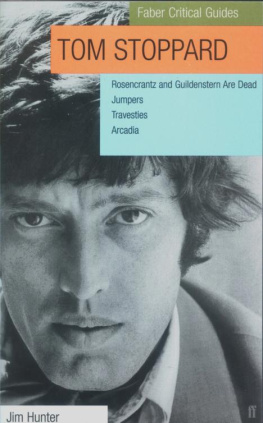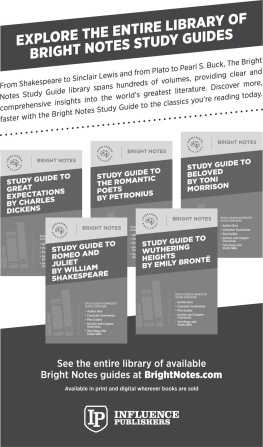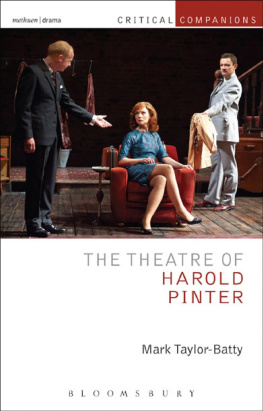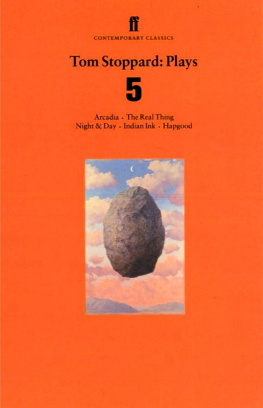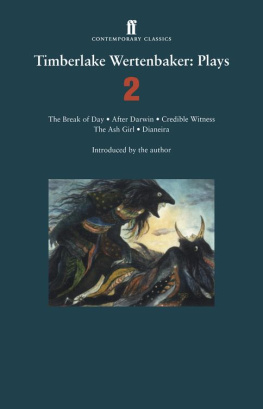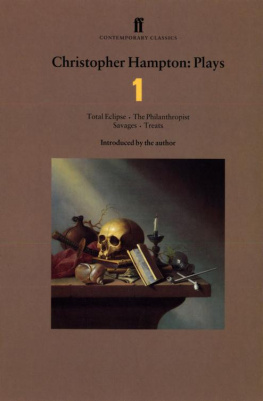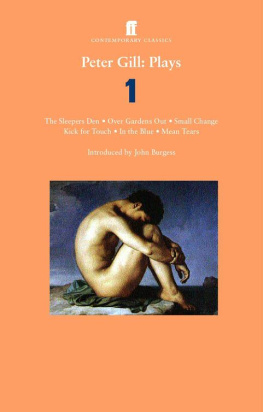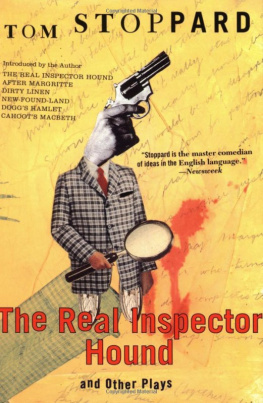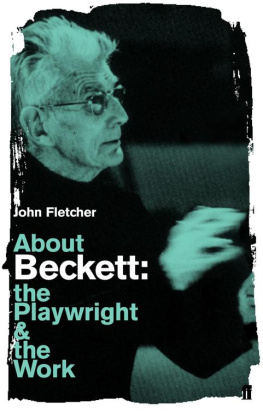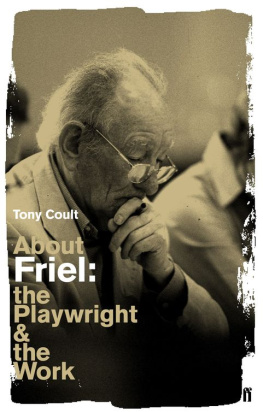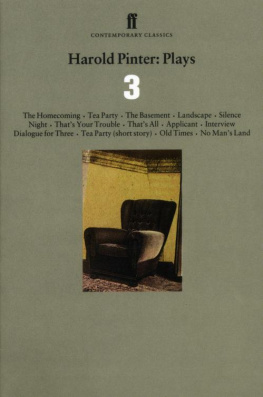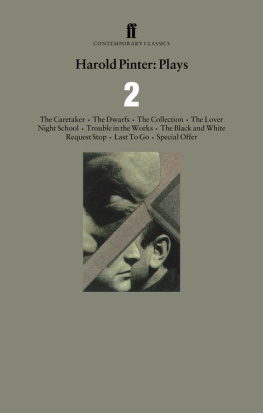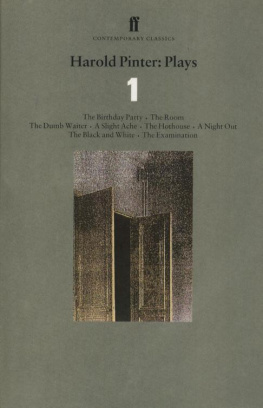The need to make an imaginative leap when reading dramatic texts is well known. Plays are written with live performance in mind. Often a theatre audience is confronted with a stage picture, a silent character or a vital movement any of which might be missed in a simple reading. The Guides advise you what to look for.
All plays emerge from a context a background the significance of which may vary but needs to be appreciated if the original impact of the play is to be understood. A writer may be challenging theatrical convention, reacting to the social and political life of the time or engaging with intellectual ideas. The Guides provide coverage of the appropriate context in each case.
There are few quotations in this book from critics, and each is identified as it occurs. There are many quotations from Tom Stoppard himself in interview, and references to these are abbreviated. A key interview is the long one given to the editors of TheatreQuarterly, issue 14, MayJuly 1974, quotations from which are identified by the name of the magazine. Other interviews were given in 1976 to Ronald Hayman and included in his very useful short study: ContemporaryPlaywrights:TomStoppard (Heinemann, 1979); quotations from these are identified by Haymans name.
Other quotations come from ConversationswithStoppard by Mel Gussow, Nick Hern Books, 1995, and a large anthology, TomStoppardInConversation, edited by Paul Delaney, University of Michigan Press, 1994 (which also reprinted the TheatreQuarterly interview). These are identified by the words InConversation followed by the name of the particular interviewer.
Page references to the plays by Stoppard under discussion are to the single editions of the plays published by Faber (re-set in 2000). For each quotation from RosencrantzandGuildensternAreDead,Jumpers and Travesties, two page references are given: the first is to the Faber edition, the second is to the edition published by Grove in the United States. In the chapter on Jumpers, where a single page reference is given, this is to the Faber edition, which incorporates changes to the text made for the 1984 production at the Aldwych Theatre in London and includes a Coda substantially different from that in the Grove edition (see pages 7980 for a discussion of the different Codas).
References to RosencrantzandGuildensternAreDead: when Shakespeares play alone is intended, the attendant lords are given their full names; concerning Stoppards play specifically, they are called Ros and Guil; when both plays are equally meant, they are noted simply R. and G.
I am grateful to Gay Firth and Alistair Randall for bringing material to my notice, and to Jerry Burridge for help with Stoppards references to physics and mathematics.
Thanks to Eric Dorster and Peter Stansfield, who have helped me clarify two notes.
J.H.
Tom Stoppard spoke English from an early age and has lived in England since he was nine. His writing shows a delight in English language and literature, and at one point uses the particularly English example of a cricket bat as an emblem of craftsmanship. Yet he was actually born Czech, as Thomas Straussler, in 1937; and was twice an infant refugee: first from the Nazis in 1939 and then in 1942 from Singapore and the Japanese, at which time his father died in enemy hands, and thats that (quoted by Kenneth Tynan in ShowPeople).
In Darjeeling, in northern India, his mother worked for the Czech shoe company Bata, who had employed his father, and Tom boarded at an American multi-racial school. In 1946 his mother married Major Kenneth Stoppard and the family moved to England. Tom went to boarding prep school (a privileged education, a lovely house, acres of parkland, we had a lovely time: SundayTimes, 1974) and on to a senior independent school. The danger and crises of his early childhood were followed by a relatively fortunate upbringing, in peacetime and in a stable country. This sequence in Stoppards life repeated danger overlaid by apparent security almost certainly contributed to his later personality and to the plays we shall be studying; and I return to it in the final chapter of this book (p. 235).
Stoppard left school in 1954, aged seventeen and thoroughly bored by the idea of anything intellectual alienated by everyone from Shakespeare to Dickens (TheatreQuarterly). For nine years he worked as a journalist in Bristol, eventually trying his hand at fiction and plays. In 1963 he moved to London, his first TV play was shown and a novel was commissioned; this was followed by plays for BBC Radio (including five episodes of TheDales, a radio soap with a huge regular audience) and short stories in a hardback anthology. Stoppards apprenticeship was similar to that of most eventually successful dramatists: hard graft, gaining professional expertise by reviewing and writing playscripts for whatever market could be found.
The breakthrough year was 1966, when RosencrantzandGuildensternAreDead was acclaimed at the Edinburgh Festival. For well over thirty years since then, Stoppard has consistently held his position as one of Englands most admired and enjoyed dramatists. He was knighted becoming Sir Tom in 1997. In addition to his own plays, he has scripted adaptations of European comedies and the screenplays of many films, including the 1999 success, ShakespeareinLove. He often attends rehearsals of his new plays, rarely making a direct intervention but remaining on hand to consider redrafting a line or a whole scene; and directors and actors consistently say his presence is helpful.
Stoppard has been married twice and has four grown-up sons. He prefers to keep a low public profile, but emerged in the 1970s and 1980s to be politically active in human-rights protests against Communist regimes in the Soviet Union and Eastern Europe. In 1977 he made his first return visit to Czechoslovakia, and became a friend of the dramatist Vaclav Havel, who at the time was just released from prison (he was re-imprisoned later) and eventually became the countrys first president after Communist rule. Stoppard describes himself as conservative, and is half-way religious I approve of belief in God and I try to behave as if there is one, but that hardly amounts to faith (InConversation:Guppy). What he does firmly defend is his belief in moral absolutes: The difference between moral rules and the rules of tennis is that the rules of tennis can be changed (see

